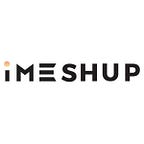We just added automatic texture mapping into iMeshup’s uploader. If you’re a seasoned 3D designer, you know that’s good news for you and your models. But what about those of us new to the cool new world of 3D?
What is it?
Texture mapping means covering a 3D-modeled polygon with a 2D image. It was officially invented in 1974 by Ed Catmull, and it’s a truly brilliant CAD invention. It’s a supremely helpful shortcut — instead of building every bump and nick into the mesh of your 3D polygon, you can add detail by painting it with texture! It means filling the polygon’s pixels with the pixels of the texture image file. Let’s say you’re modeling a wall. Instead of individually modeling each brick and making a very high-poly scene, you use a picture of bricks. It’s a much more efficient way to make your scene look realistic. Textures are the surefire way to add detail, roughness, and patterns. Every material you dress your models in can have multiple textures factoring in to its rendered appearance. Let’s take a look at the different kinds of textures:
- Color textures
Also known as diffuse, color texture is the main factor in a material’s appearance. It’s the overall color the model takes on.
- Transparency textures
Transparency textures define the transparency of the material. Duh! These texture images are always in grayscale. Here, the darker (blacker) parts mean the material is more transparent, and the lighter (whiter) parts mean the material is more opaque. Using these textures is a simple trick to let modelers make complex effects with minimal effort.
- Bump textures
Another kind of grayscale image that is used as a texture is a bump texture. These make your objects appear even more 3D: they create bumps and wrinkles on the surfaces of your models. Here, the whiter parts appear to stick out, and the blacker parts appear to dip inward. Ta-da! Ridges and valleys. Bump textures are key in giving your material more richness and roughness.
- Other textures
Besides the kinds of texture images listed above, you can also use things like environment textures or reflection textures. Basically, the more textures you use (and the more advanced the program or plugin!) the better the visual fidelity. But even just sticking to the three previously described texture types will take you leaps and bounds in terms of the realistic appearance of your models.
Images are great. But how do we place them on our models? Here’s where mapping (also called UV mapping) comes in. That refers to the process of telling the computer how the texture image will map onto your mesh. The size and rotation of the fit is not something the computer automatically knows how to process — here, you need to input how these two things hook together.
Doing the mapping
There are many ways images can be painted onto meshes. In order to get them to be as realistic-looking as possible, you need to pay attention to how big the image appears on your object, as well as its orientation in space. It requires you to “unwrap” 3D objects so that they are flat — much like cutting out sewing pattern pieces from material. Then, you need to give it a functional UV layout: your texture maps will need to directly correspond to the UV coordinates of an unwrapped 3D model. That’s something you can achieve by using real-life photos, 2D painting software like Adobe Photoshop.
UV layouts
A UV layout is an unwrapped 3D model flattened out into 2D. Every coordinate on this two-dimensional plane is called a UV. These UVs represent vertices of your 3D model.
Unwrapping: This is the process of assigning every “face” of your polygon a set of UV coordinates in a square bitmap image. Once you have this, you can make sure your texture maps match up with this layout.
Creating the layout: The procedure for laying out a model’s UV coordinates starts by applying an automatic projection (either planar or cylindrical) to a selected group of faces.
- Planar projections are for flat objects and surfaces (like walls!) The 3D model is squarely flattened in one direction.
- Cylindrical projection is surfaces that are curved. Think of it like cutting the side of a toilet paper tube and lying it flat!
However, most objects you’ll model in 3D are not perfectly flat or exactly cylindrical. That means automatic UV mapping is far from perfect. UV mapping almost always requires the 3D designer to manually adjust the layout by moving around pieces for the best fit. There are plenty of tutorials on how to optimize your UV mapping online. All polygons of your 3D model need to be UV mapped so that your creations can look as complete as you imagined them. That can take a long time, but it’s worth it.
iMeshup’s texture support
The time and effort you spent dressing up your models in intricate materials is not all for naught. After you’ve created your texture files and UV mapps, iMeshup has a newly-released automatic texture mapping system that places them in the right spots in our editor and viewer. It only requires that you follow a few key file naming conventions before you hit upload. Your models will be complete as soon as they’re on the cloud. For more information, check out our automatic texture mapping guide in iMeshup’s help center.
We love everything 3D, and we’re happy to provide all the support we’ve got. Reach out to us if you encounter any issues, problems, bugs, quirks, snafus, or mysterious hooded figures! We’d love to offer you one-on-one help.
